Arms control is a term for international restrictions upon the development, production, stockpiling, proliferation and usage of small arms, conventional weapons, and weapons of mass destruction. Historically, arms control may apply to melee weapons before the invention of firearm. Arms control is typically exercised through the use of diplomacy which seeks to impose such limitations upon consenting participants through international treaties and agreements, although it may also comprise efforts by a nation or group of nations to enforce limitations upon a non-consenting country.

The Chemical Weapons Convention (CWC), officially the Convention on the Prohibition of the Development, Production, Stockpiling and Use of Chemical Weapons and on their Destruction, is an arms control treaty administered by the Organisation for the Prohibition of Chemical Weapons (OPCW), an intergovernmental organization based in The Hague, The Netherlands. The treaty entered into force on 29 April 1997. It prohibits the use of chemical weapons, and also prohibits large-scale development, production, stockpiling, or transfer of chemical weapons or their precursors, except for very limited purposes. The main obligation of member states under the convention is to effect this prohibition, as well as the destruction of all current chemical weapons. All destruction activities must take place under OPCW verification.
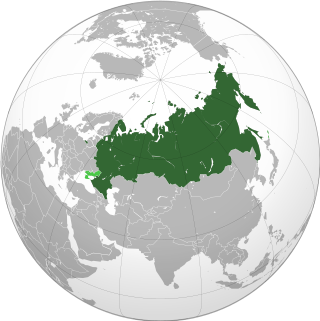
The Russian Federation is known to possess or have possessed three types of weapons of mass destruction: nuclear weapons, biological weapons, and chemical weapons. It is one of the five nuclear-weapon states recognized under the Treaty on the Non-Proliferation of Nuclear Weapons. Russia possesses a total of 5,889 nuclear warheads as of 2023, the largest confirmed stockpile of nuclear warheads in the world. Russia's deployed missiles number about 1,674, also the largest confirmed strategically deployed arsenal in the world as of 2023. The remaining weapons are either in reserve stockpiles, or have been retired and are slated for dismantling. Russia's predecessor state, the Soviet Union, reached a peak stockpile of about 45,000 nuclear warheads in 1986. The number of weapons Russia may possess is currently controlled by the bilateral New START treaty with the United States.

France is one of the five "Nuclear Weapons States" under the Treaty on the Non-Proliferation of Nuclear Weapons, but is not known to possess or develop any chemical or biological weapons. France is the only member of the European Union to possess independent (non-NATO) nuclear weapons. France was the fourth country to test an independently developed nuclear weapon, doing so in 1960 under the government of Charles de Gaulle. The French military is currently thought to retain a weapons stockpile of around 300 operational (deployed) nuclear warheads, making it the fourth-largest in the world, speaking in terms of warheads, not megatons. The weapons are part of the national Force de frappe, developed in the late 1950s and 1960s to give France the ability to distance itself from NATO while having a means of nuclear deterrence under sovereign control.

Many nations continue to research and/or stockpile chemical weapon agents despite numerous efforts to reduce or eliminate them. Most states have joined the Chemical Weapons Convention (CWC), which required the destruction of all chemical weapons by 2012. Twelve nations have declared chemical weapons production facilities and six nations have declared stockpiles of chemical weapons. All of the declared production facilities have been destroyed or converted to civilian use after the treaty went into force.
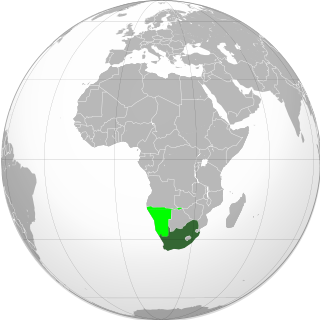
From the 1960s to the 1990s, South Africa pursued research into weapons of mass destruction, including nuclear, biological, and chemical weapons under the apartheid government. South Africa’s nuclear weapons doctrine was designed for political leverage rather than actual battlefield use, specifically to induce the United States of America to intervene in any regional conflicts between South Africa and the Soviet Union or its proxies. To achieve a minimum credible deterrence, a total of six nuclear weapons were covertly assembled by the late 1980s.
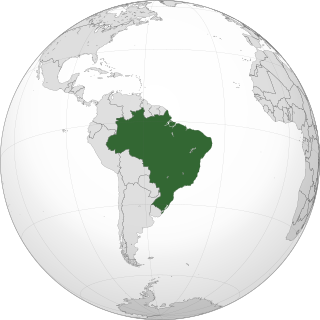
In the 1970s and 1980s, during the military regime, Brazil had a secret program intended to develop nuclear weapons. The program was dismantled in 1990, five years after the military regime ended. Brazil is considered to possess no weapons of mass destruction but does have some of the key technologies needed to produce nuclear weapons.

Argentina has a history with the development of weapons of mass destruction. Under the military dictatorship, Argentina began a nuclear weapons program in the early 1980s, but this was abolished when democracy was restored in 1983.

Australia does not possess weapons of mass destruction, although it has participated in extensive research into nuclear, biological and chemical weapons in the past.

Libya pursued programs to develop or acquire weapons of mass destruction from when Muammar Gaddafi seized control of Libya in 1969 until he announced on 19 December 2003 that Libya would voluntarily eliminate all materials, equipment and programs that could lead to internationally proscribed weapons. This included weapons of mass destruction and long-range ballistic missiles.

During the late 1940s and 1950s, Sweden had programs for both nuclear and chemical weapons. During the first decades of the Cold War, a nuclear weapons program was active.

Bulgaria has developed weapons of mass destruction, most notably chemical weapons. Chemical weapons production was concentrated in Smyadovo. As of 2016, Bulgaria does not possess any weapons of mass destruction.
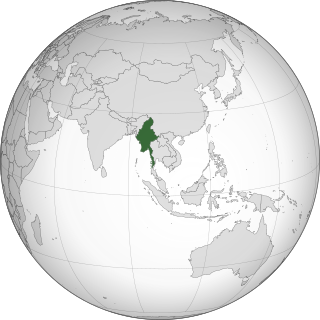
In 2009, it was reported that Myanmar was suspected to have initiated a nuclear weapons program. If such a program does exist, Burma's technical and financial limitations may make it difficult for the program to succeed. The United States expressed concern in 2011 about potential violations of the Treaty on the Non-Proliferation of Nuclear Weapons (NPT), though by 2012 these concerns had been "partially allayed".

Mexico is one of few countries possessing the technical capability to manufacture nuclear weapons. However, it has renounced them and has pledged to only use its nuclear technology for peaceful purposes following the Treaty of Tlatelolco in 1967. In the 1970s, Mexico's National Institute for Nuclear Research successfully achieved the creation of highly enriched uranium, which is used in nuclear power plants and in the construction of nuclear weapons. However, the country agreed in 2012 to downgrade the high enriched uranium used on its nuclear power plants to low enriched uranium. This process was carried out with the assistance of the International Atomic Energy Agency.

Egypt had a history of weapons of mass destruction and used chemical weapons during the North Yemen Civil War. Although it has signed the Nuclear Non-Proliferation Treaty, it still remains one of only four countries not to ratify the Chemical Weapons Convention and has not ratified the Biological Weapons Convention.

The Philippines is not known, or believed, to possess weapons of mass destruction. Article II Section 8 of the Philippine Constitution explicitly forbids the presence of nuclear weapons in the Philippines.
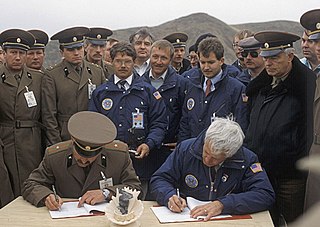
The Republic of Kazakhstan, once a republic of the Soviet Union, was a primary venue for Soviet nuclear weapon testing from 1949 until 1989. Following the collapse of the Union of Soviet Socialist Republics (USSR) in 1991, Kazakhstan became the fourth-largest nuclear power in the world and hosted a considerably large weapon support infrastructure due to its reliance on the Soviet nuclear program as a means to develop its own local economy. Besides the nuclear program, Kazakhstan was also a prominent site of Soviet programs of biological and chemical weapons.
The Es-Salamresearch reactor, also known as the Aïn Oussara nuclear reactor is a nuclear research reactor in Algeria. The reactor can produce 15 megawatts-thermal and its primary uses are radiopharmaceutical production, neutron activation analysis, neutron radiography, and training. The reactor was supplied by China and built in the region of Aïn Oussera, nearly due south of the capital city of Algiers. It reached criticality in February 1992 and began operation in late 1993.










